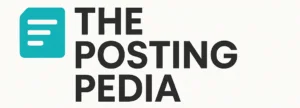A New Wave of Healthcare Innovation
Across the world, a new generation of MedTech startups is reshaping how chronic diseases are treated and managed. These companies are proving that medical innovation is no longer limited to hospitals and laboratories. It now lives on wrists, phones, and wearable patches.
For patients living with diabetes, heart disease, or hypertension, connectivity has become the foundation of better care. Smart devices and digital ecosystems are helping patients monitor their conditions in real time while giving healthcare providers continuous access to data that drives proactive intervention.
The Rise of Connected Healthcare
Connected healthcare refers to a network of devices, applications, and cloud platforms that work together to collect, analyze, and share medical data securely. This ecosystem transforms traditional treatment models into intelligent systems that predict problems before they occur.
By combining biosensors, mobile apps, and artificial intelligence, startups are reducing the gap between patients and providers. Instead of relying on periodic checkups, connected health systems deliver continuous insight. This transition is empowering patients to become partners in their own care rather than passive recipients.
Empowering Patients Through Data
For decades, medical data was trapped inside hospitals and clinics. Connectivity has liberated that information. Patients can now see their glucose trends, blood pressure patterns, and sleep cycles from their phones. This visibility builds awareness and confidence, encouraging healthier daily choices.
Devices that translate complex data into understandable visuals are making it easier for users to act quickly. Real time alerts, predictive analytics, and cloud dashboards are redefining the meaning of personalized care.
As seen with EOFlow and its approach to wearable insulin delivery, connectivity turns treatment into an experience that adapts to life instead of interrupting it. The focus is not only on medical accuracy but also on usability and freedom.
The Power of Proactive Care
One of the greatest advantages of connected technology is its ability to detect early warning signs. Continuous data streams can alert healthcare providers before symptoms worsen. This prevents complications, reduces hospital visits, and improves outcomes.
AI algorithms enhance this process by identifying patterns that humans might overlook. Predictive models can flag abnormal activity, suggest dosage adjustments, or recommend lifestyle changes. In chronic disease care, prevention is not just a goal; it becomes a measurable result.
Collaboration Between Humans and Machines
Technology does not replace medical professionals; it strengthens their capabilities. When connected devices provide accurate real time data, doctors can focus on decision making rather than data collection. Nurses can monitor multiple patients simultaneously, and caregivers gain peace of mind knowing they can intervene at the right time.
This synergy between human insight and machine intelligence is building a new healthcare framework that is efficient, compassionate, and deeply personalized.
Global Impact and Accessibility
Connectivity is not limited to developed markets. Affordable MedTech solutions are bringing modern healthcare to underserved regions where access to hospitals or specialists is limited. Low power sensors, smartphone integration, and telemedicine platforms are breaking geographical and financial barriers.
As startups continue to innovate, the goal is to create scalable models that make chronic disease management accessible for all. From remote villages to urban centers, connected healthcare ensures that distance never becomes a barrier to quality care.
Looking Ahead
The next phase of healthcare innovation lies in intelligent, adaptive systems that understand human behavior as much as biology. As MedTech startups continue to merge design, data, and empathy, chronic disease management will evolve into a seamless, everyday experience.
Connectivity is no longer a feature; it is the backbone of modern healthcare. The challenge now is to keep technology invisible, secure, and deeply human.





